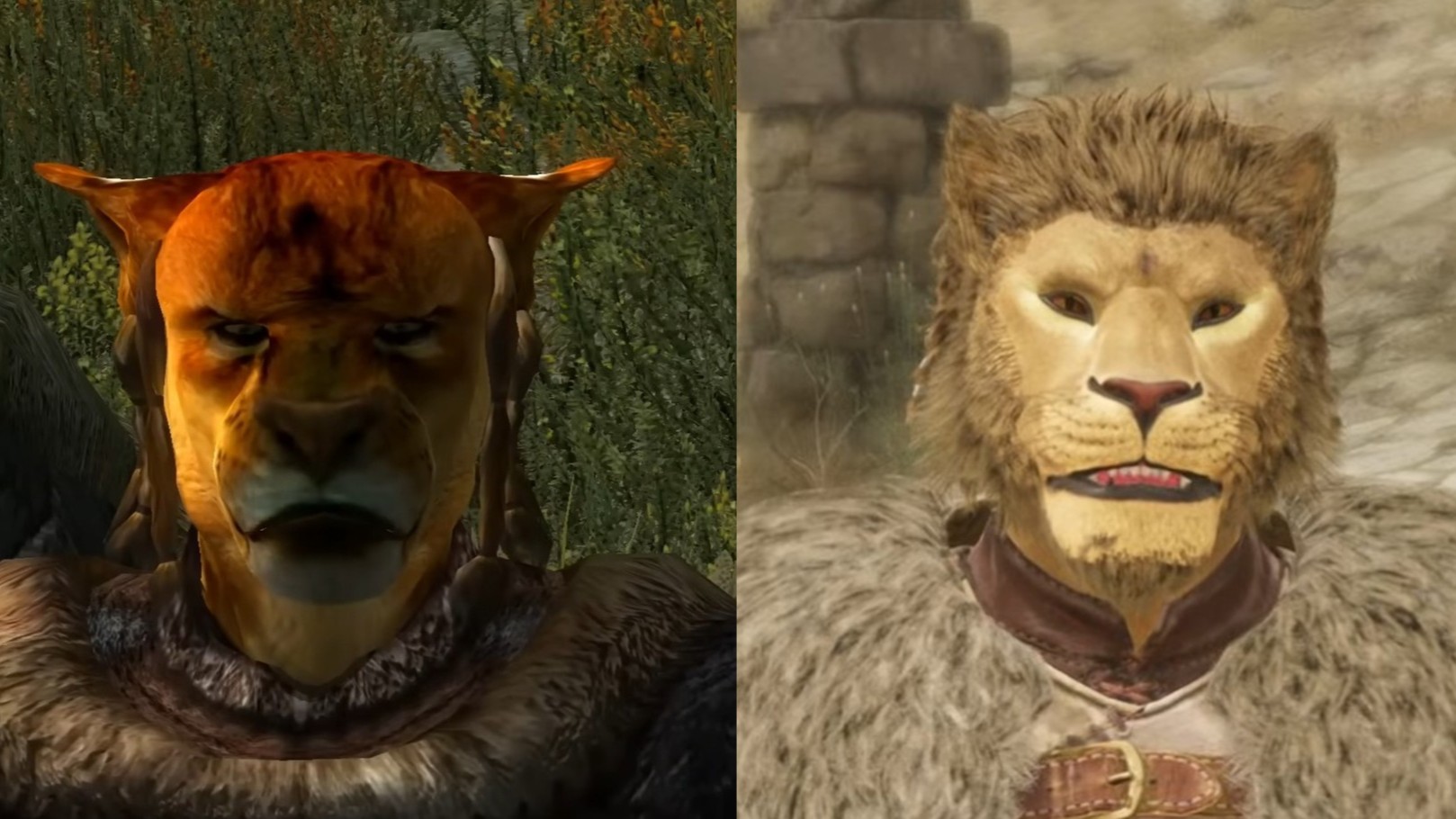AI, Bots and Canvases Part V: Addressing the app gap
Messaging as a platform has exploded in recent years. The opportunities in this space are not lost on industry giants Apple, Facebook, Google or Microsoft.
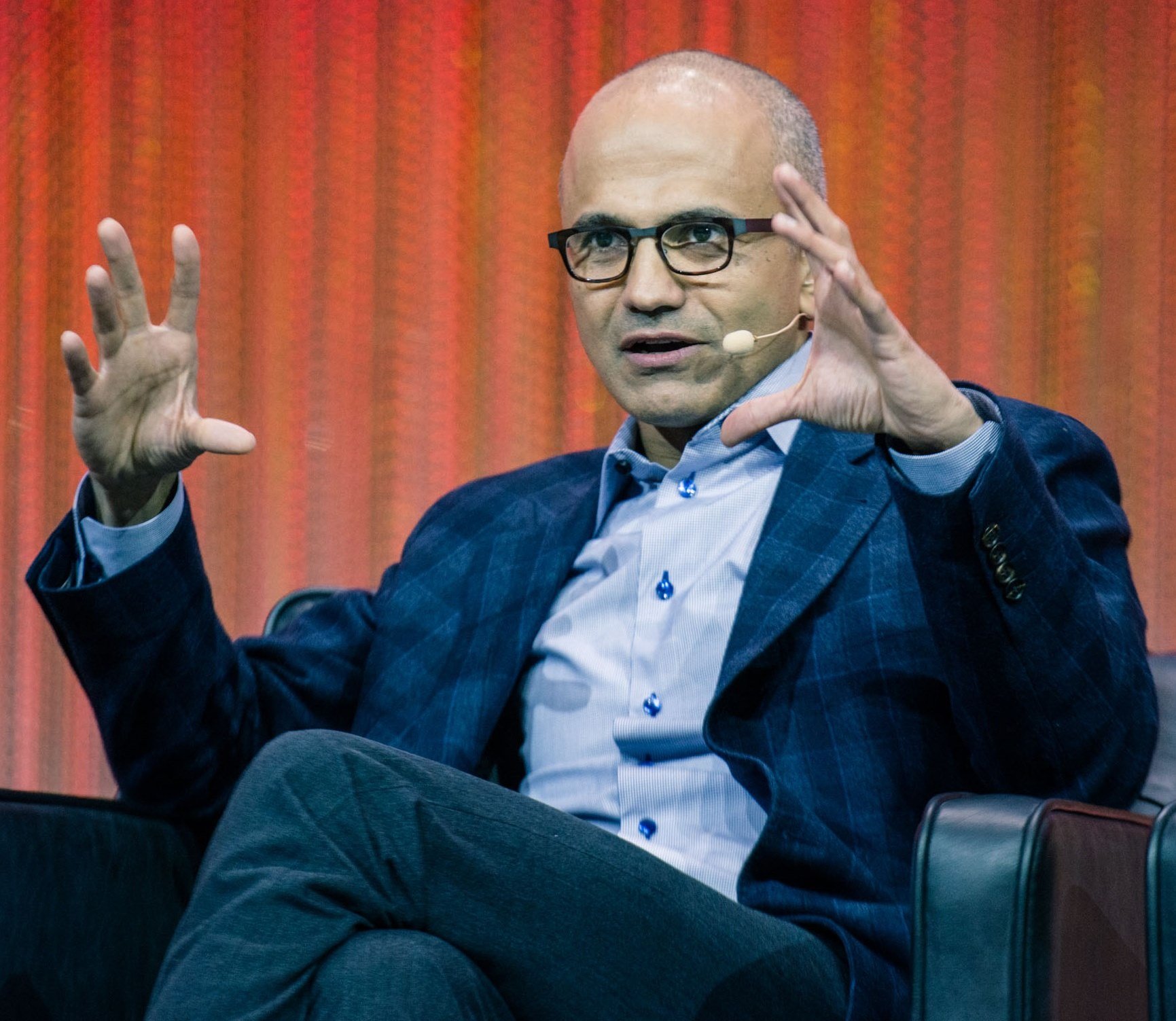
Each of these big players has a horse in the race and is approaching the challenges of the industry in both similar and unique ways.
- Google has launched its new and versatile messenger, Allo, accompanied with an improved AI, Google Assistant. Together they bring a powerful and intelligent combination to end users.
- Apple's iMessage has been revamped and benefits from imbued intelligence and openness to third-party developers. As a platform for apps, developers can bring apps to iMessage that will allow users to perform tasks directly from this canvas.
- Facebook has launched Messenger Platform which allows developers to build bots that users can communicate with and use to perform services directly from Messanger. "M," the company's AI-human hybrid assistant can be communicated with via text directly from the Messaging platform to execute tasks for end users.
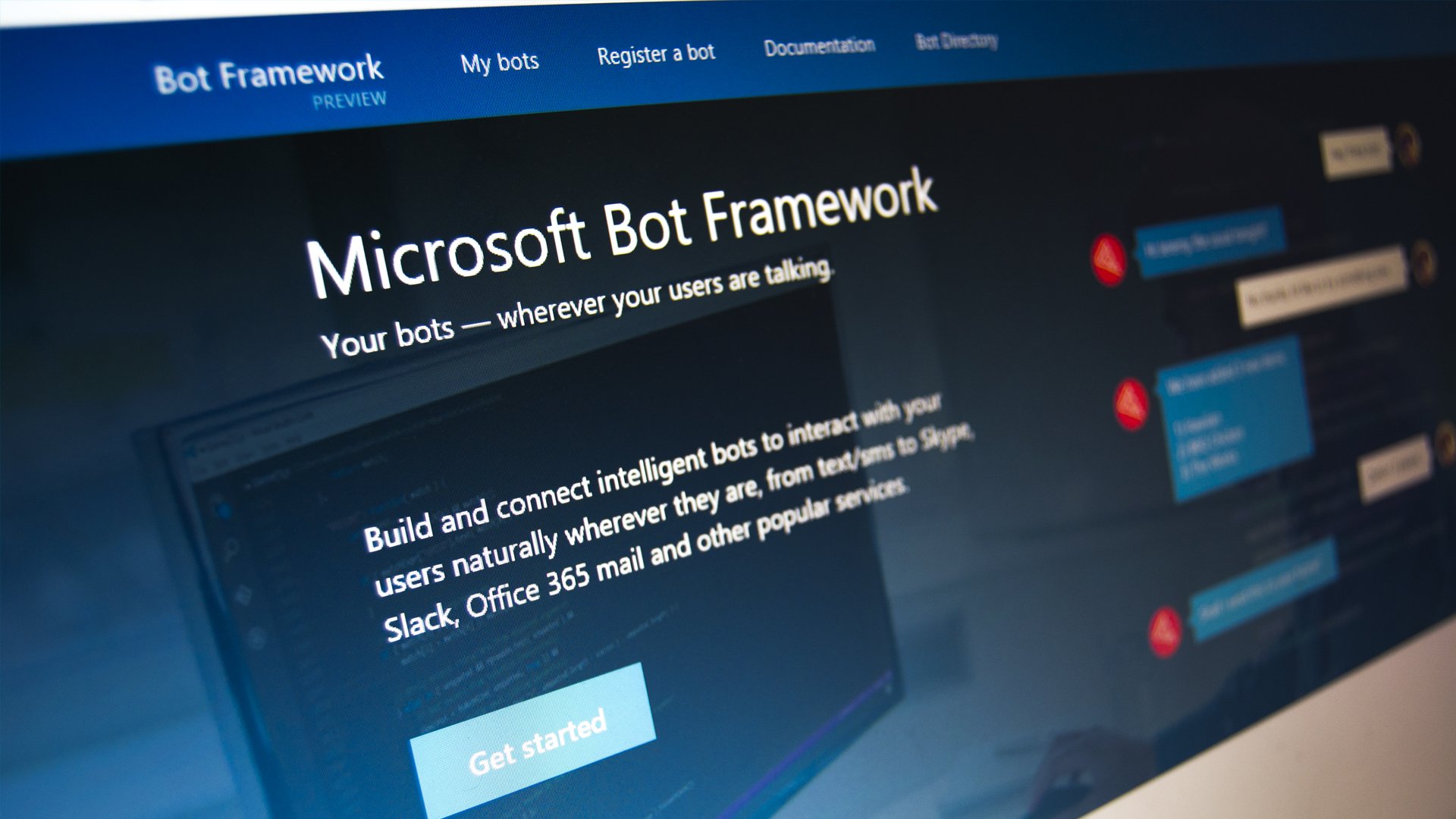
In contrast to its rivals, Microsoft's "messengers as a platform" approach is more ambitious. Redmond is not following the strategy of its competitors by merely focusing on its own messaging platform. The company's Conversations as a Canvas approach is consistent with the firm's goal to be the platform for individuals and enterprises to get things done, or to "do more," regardless of the platform used.
Wand's ability to get things done without "apps" may help Microsoft address the app gap.
In essence, Microsoft doesn't want to own the boats; they want to be the ocean upon which the boats are floating. With this in mind, Microsoft's platform strategy may signal how the company intends to leverage it's purchase of messaging app developer Wand Labs.
Wand's unique messaging platform approach to "getting things done" with apps or better yet without them, in conjunction with Microsoft's Conversation Canvases and Bot Framework strategy gives Redmond an opportunity to optimize on the industry's move to messengers as a platform and to address the issue of the app gap.
Microsoft's platform approach is a foundation for Wand
Before we get to Wand, let's establish a clear picture of Microsoft's platform approach and AI and bots strategy. We know that Microsoft has not limited its AI and bots approach to its own messaging platform Skype. They have created a Bot Framework which allows developers to use Microsoft's tools to build bots for a range of messaging platforms. The diagram below provides a clear visual.
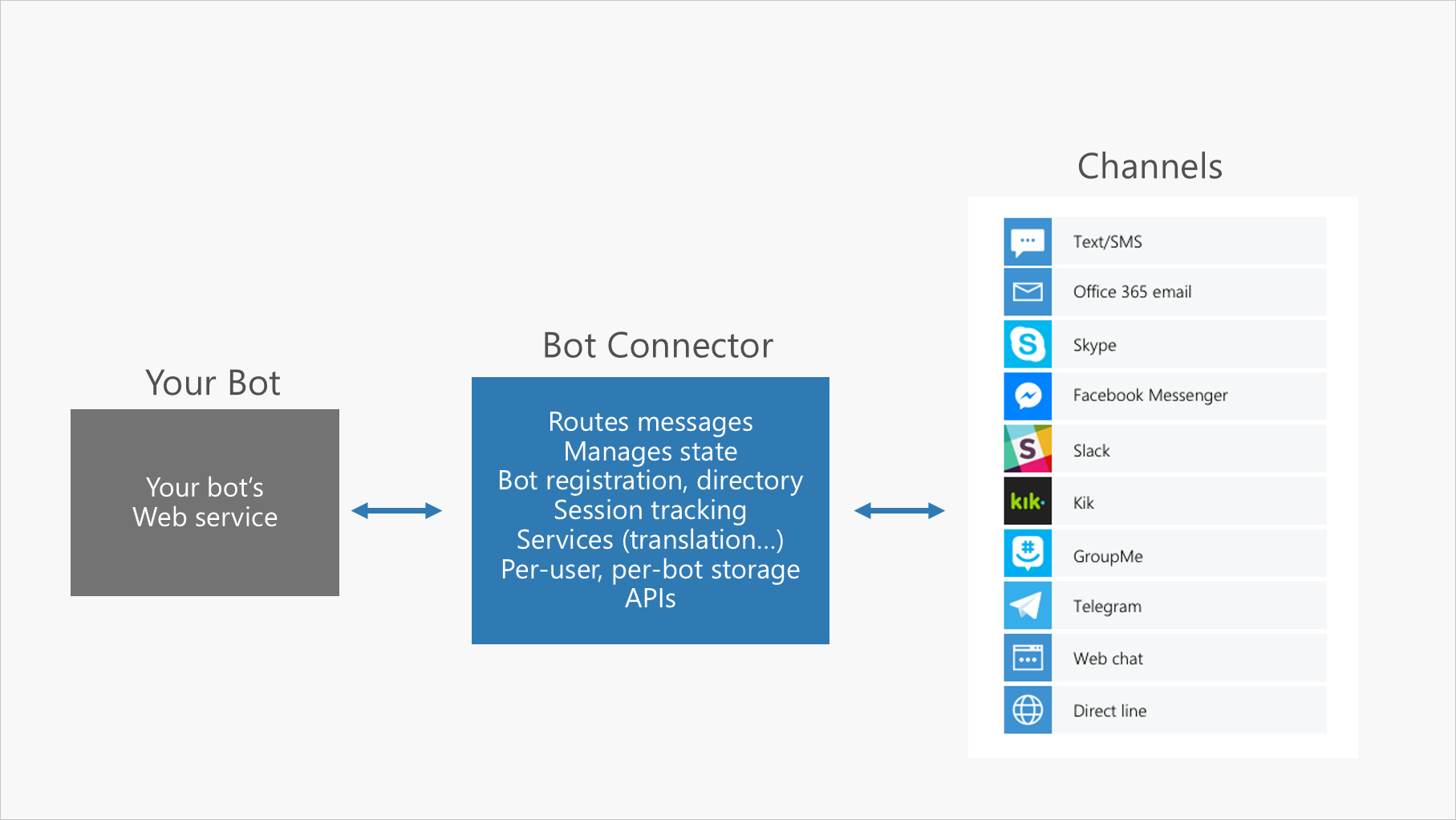
They have also made their AI, Cortana, unbounded so that she can communicate with bots via other canvases beyond Skype. This is an important point. Nadella said it this way:
Take bots — no one else is talking about bots that can be built using all the rich cognitive cloud services we have. How did one teach a bot how to have a conversation with a human? That requires conversational understanding, dialogue understanding. We have APIs for doing all of that in our cloud in Azure. And you can, in fact, build a Slack bot, or you can build a bot for Line, or you can build a bot even for Facebook. We don't know yet exactly what Facebook does, but our back end is independent. And you can just use your back end to build bots, like building mobile apps or building websites in the past.Then we have our own set of conversational canvases like Skype that they're opening up for these bots. So the approach we're taking is much more of a platform company approach, much more of an approach that says that it's both your personal and professional data. And if I take those two dimensions, I don't think anyone else comes at it that way.
Microsoft wants to offer both the tools and the platforms that help people get things done. When the PC was the personal computer before smartphones and the internet, Microsoft's dominance with Windows as a platform was enough to ensure Redmond's solution was the platform to help people "do more," as Satya Nadella communicates Microsoft's goal to be.
Get the Windows Central Newsletter
All the latest news, reviews, and guides for Windows and Xbox diehards.
Microsoft is intent on providing the modern "platforms" for personal computing.
In an age of mobile computing, the Cloud, artificial intelligence, messaging platforms, apps and more, Microsoft's goal to provide (the now), many platforms for personal computing is far more complex and diverse than it was when the world of personal computing was confined to Windows PCs. Still the company is committed to providing the personal computing platforms users defer to get things done.
Microsoft's branding of personal computing

Microsoft's ambitious strategy involves homegrown solutions as well as acquisitions of smaller companies to help the Microsoft brand, "become" the tools that people use. The purchase of Accompli, Sunrise, Datazen and LinkedIn are examples of some strategic purchases toward that end.
Microsoft is positioning its brand as the tools people use.
Furthermore, Microsoft is also positioning itself to be a major player in the personal computing area of "conversations as a platform." This represents a move away from traditional apps can benefit Microsoft in relation to the app gap issue. Under the current "warehouse of apps" model Microsoft's mobile efforts have suffered a near death blow. The mobile platform is still holding on but desperately needs a shift, such as bots and Conversation Canvases, in its favor.
Note, the company is still addressing the need for traditional apps via Xamaran and cross-platform app development and the app Bridges. However, through the Bot Framework and artificial intelligence they are preparing for and pushing the industry ([along with others](http:// /ais-bots-and-canvases-part-iv-competition-fierce-microsoft-not-alone)) in the direction of AI and bots.
Still developers, who have invested for years in more successful mobile platforms like iOS and Android, may not feel compelled to embrace developing bots for Microsoft's solutions. This current, and potential, future lack of developer support hurts Redmond's mobile presence today and may affect their impact in the "messaging as a platform" paradigm tomorrow. This is a dilemma in need of a solution. Wand may be part of that solution.
Wand(ering) AI's and bots
Microsoft, I believe, is working to evolve Skype into a strong first-party enterprise and consumer messaging platform while incorporating Wand's technology into its Conversations Canvases strategy. Microsoft's mobile strategy requires a strong first-party messaging option.
Most messaging platforms and AI digital assistants are used primarily from mobile phones. Apple for example, has dedicated users of iMessages and Siri on the iPhone. Moreover, Google may see a boon of Allo users to accompany the current Google Now users on Android phones. These entrenched smartphone users of Apple's and Google's platforms coupled with a billion Facebook Messenger users across all platforms, leaves Microsoft's Skype with an uphill battle as a competitive consumer-facing messaging platform.
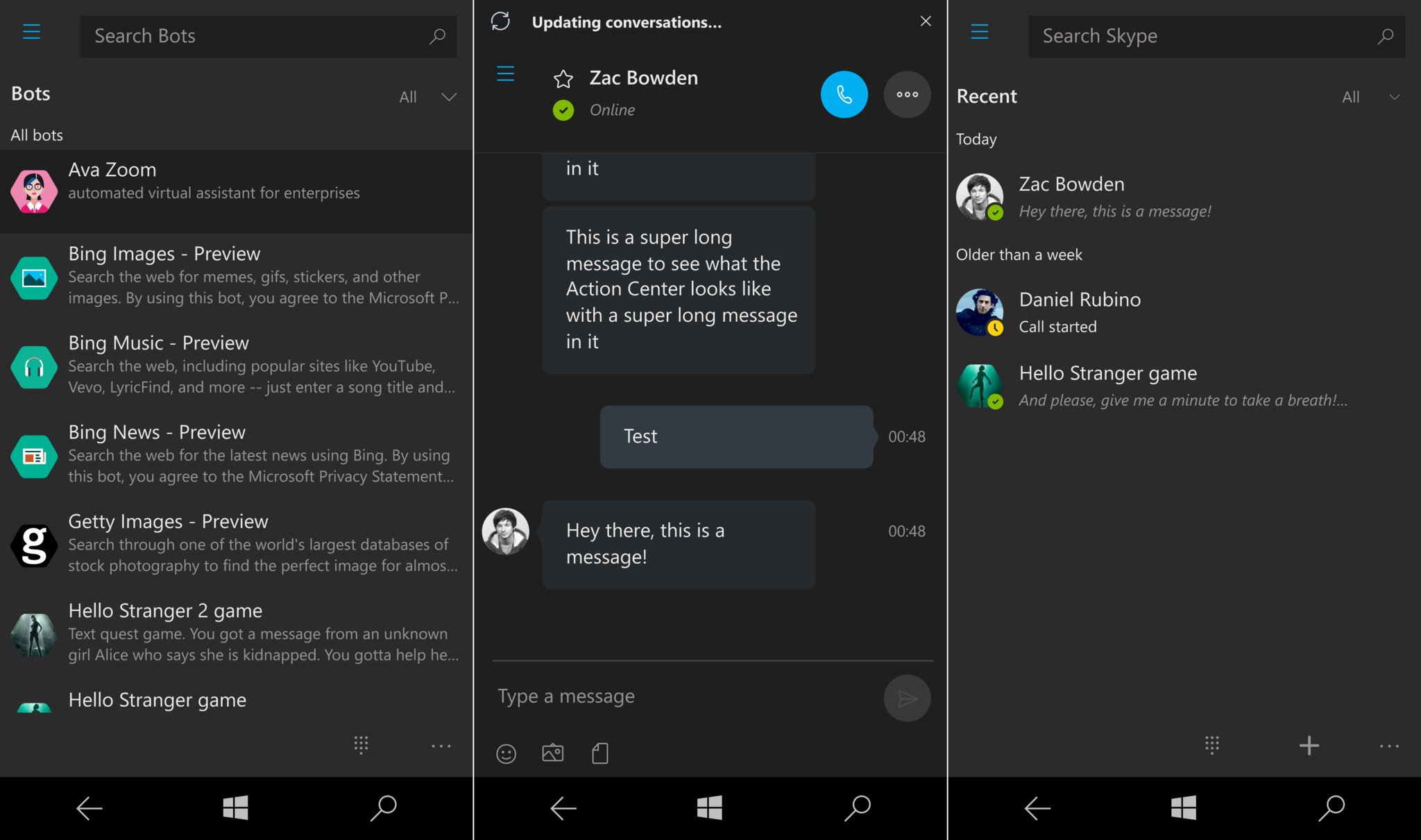
Skype boasts about 300 million daily users. However, given the dominance of Apple and Google in the consumer space, their native messaging solutions along with Facebook Messenger and other third-party options dominate mobile messaging. Microsoft is desperately attempting to reposition Skype as a more appealing first-party messaging platform that will benefit from its long-term AI and bots cross-platform strategy. This positioning is important because as Redmond's bots and AI plans (hopefully) yield fruit over time, Microsoft's "best on Windows" goal would require that bots and Cortana on Skype would be optimally implemented on Windows 10 devices including phones.
"Best on Windows" would see bots and Cortana optimally implemented in Skype.
Skypes shift from a peer-to-peer structure to a cloud-based platform has admittedly presented many users with a less than ideal experience. Furthermore, compared to the flashy, consumer-friendly UI affects Apple and Google have added to their messengers, Skype feels rather utilitarian. Still, the early integration of about 24 bots in Skype preview reveal an engaging potential.
Seriously, if you have not tried out the @Skype Preview bots, you really need to - they are all sorts of funSeriously, if you have not tried out the @Skype Preview bots, you really need to - they are all sorts of fun— Jen Gentleman (@JenMsft) August 18, 2016August 18, 2016
Redmond does not yet have a strong consumer-facing messenger platform to rival the engaging UI elements consumers are experiencing with other tools on rival platforms. The companies support of multiple canvases is consistent with Redmond's platform-company ideology but is also a strategic survival play.
It is evident however, despite criticisms of its current state, Microsoft is working at making Skype a more modern, robust, competitive and ubiquitous solution. This ubiquity, tied to the company's bot and AI strategy, in conjunction with a "best on Windows goal" is key to what Redmond may be planning with Wand.
iMessage's and Allo's UI affects offer engaging consumer-facing advantages over Skype's UI.
Consider this: "Messaging as a platform" to get things done (or to do more) with bots from ordering flowers through 1800flowers to ordering an Uber, present an opportunity for Microsoft to address the company's app gap dilemma. The age of messaging as the new platform for apps, and Redmond's penchant for ubiquity as a platform company provides a potential solution through Wand's unique approach to messaging and apps.
Moreover, the acquisition of Wand Labs may also position Microsoft to offer an industry-wide personal computing solution that may help redefine how personal computing is experienced in a post-app, messaging as a platform, age.
The magic of Wand
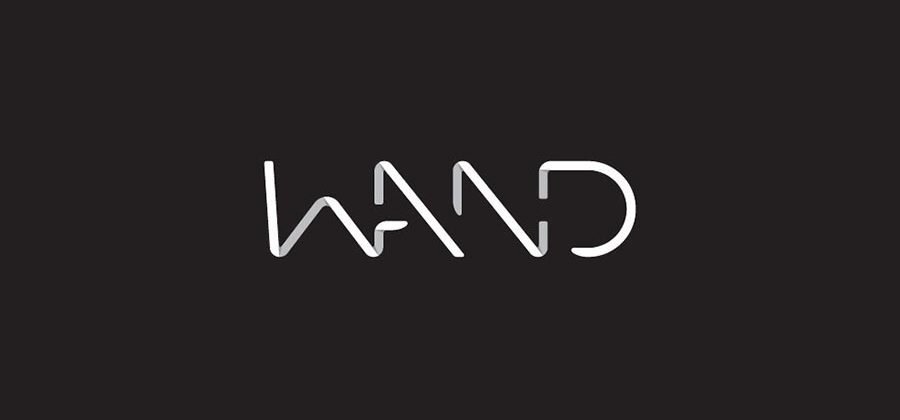
Wand began as a digital assistant created by Vishal Sharma while he was employed by Google. The assistant Jacob was intended to help people "do things in the real world." But Google's vision for \AI differed from Sharma's and Jacob became the foundation for Google Now instead, focusing on predictive actions rather the "doing" functions Sharma envisioned.
Sharma left Google, and with a team of others established Wand Labs and relaunched his original vision as an app which eventually evolved into the intelligent Wand messaging app.
Wand's goal was to address the inefficiency of the current app model.
So what makes Wand unique as a messaging app? For one it did not start out as a messaging app. Wand's goal was not to address the fundamental "problem" of communicating with people across distances — it was to address the inefficient manner in which things are accomplished under the current app model. The company retained their focus on this goal as the app evolved into a messaging platform. Here's how Sharma put it:
"We've taken a step back…The wall on your iPhone and Android looks like MS Windows from years ago. Every time you do something, you have to install and then open one of those apps. Even worse, the information on those apps is not easily shared. You can't cut and paste songs or contacts, or food dishes, from one app or service to another and expect it to behave in the same way."
Wand addresses this problem in a unique way. The app converts the information that makes each app an app into a single semantic language. It then takes this information that is now able to be easily exchanged and used between users and apps and creates a virtual version of that app. This virtual app exists in Wand as a plug-in.
An example given by one journalist who used the app is that he was able to use the Gracenote plugin in Wand to capture a song, even though he did not have the Gracenote app on his phone.
Anyone with a smidgeon of imagination can begin to imagine the potential benefits of this technology in addressing Microsoft's app gap problem.
Behind the curtain
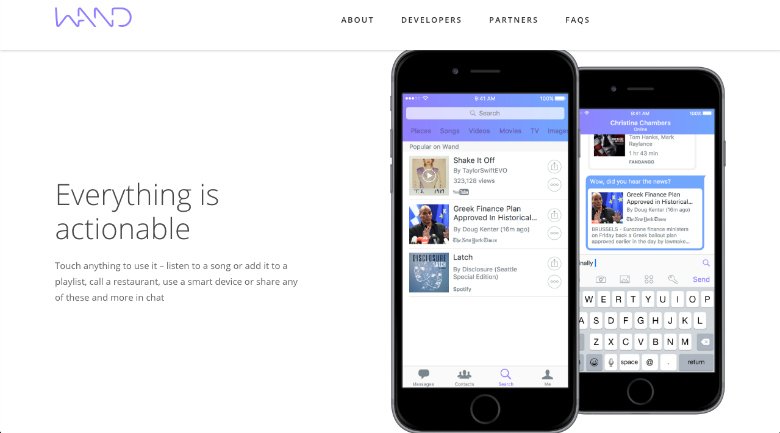
So how does Wand work its magic? In a nutshell, it breaks an app into components called "atoms." These atoms whether it is a song, contact, movie, etc. is recognized by Wand. In addition to breaking apps down into atoms and converting decoded information into virtual apps stored as Wand plug-ins, these "atoms" (which are the user's instances of an app) are also sharable. In essence, a user can share a song "atom" from one app, with a user who doesn't have that app. The receiver will be able to play the song via an app that is capable of understanding the "atom" (i.e., a video player for a movie).
Wand's tech may be integrated into messaging platforms via Microsoft's Conversation Canvases strategy.
If Microsoft plans to integrate Wands technology within the company's cross-platform AI and bot strategy, we may see Wands abilities incorporated into a host of messaging platforms across the industry. This plan, of course, includes Microsoft's first-party option Skype, where we'd hope to see optimal implementation on Windows 10 devices including phone.
Microsoft's possible plan for a ubiquitous implementation of Wand's technology throughout the industry seems consistent with the vision Sharma had for the company before its sale to Redmond. Sharma had begun talking to messaging companies about licensing Wand's technology in their messaging apps. We can see the passion and confidence Sharma has in the potential of this technology in this statement:
Like it or not, if those services want to perform Wand-like baton-waving — like giving password-free temporary access to Twitter or a Nest thermostat — they will have to come to Wand.
Now, of course, this unique technology is the providence of Microsoft.
Perfect fit
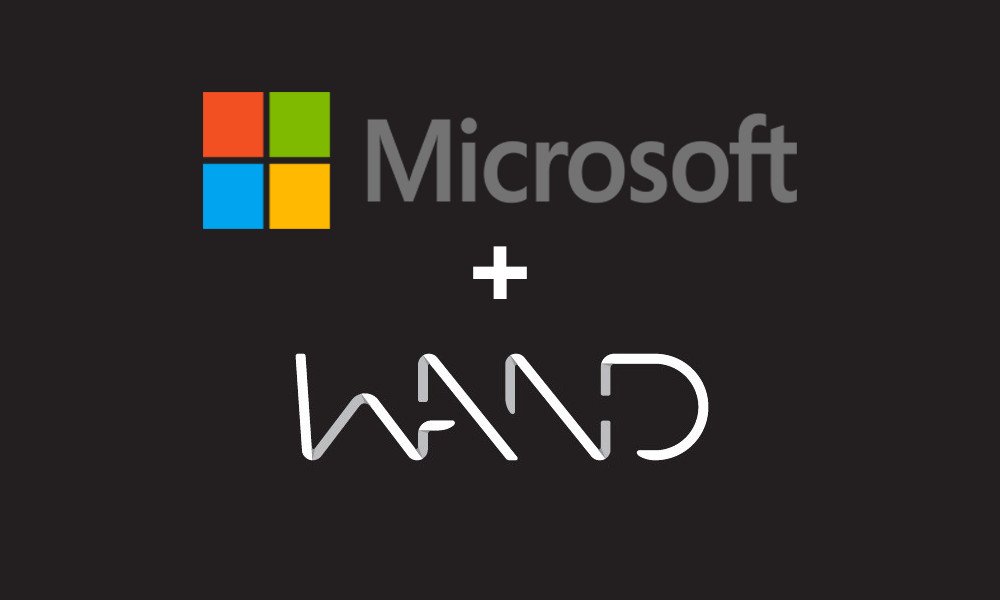
As a company dedicated to providing cross-platform solutions, Microsoft seems to be an ideal fit for Sharma's vision and passion. Sharma made this statement regarding Wand's sale to Microsoft:
Back in 2013, my team and I embarked on a journey to integrate services into the chat experience. The goal being to leverage mobile scale, natural language capabilities, and third-party services to enable users to easily access and share any authorized service or device. The work we've been doing with predictive assistance and delegated authority is at the leading edge of a broader technology shift that is redefining the information industry.It's an exciting time to be working in the area of semantics and conversation – an area that Microsoft CEO Satya Nadella has highlighted as core to the future and calls Conversation as a Platform. As such, I'm truly pleased to announce that Wand has been acquired by Microsoft.I'm proud of the work my team has done and what we've already accomplished in this emerging space – and I'm delighted to be joining a company that shares our passion and enthusiasm for this new era where conversation is the central focus. Making experiences for customers more seamless by harnessing human language is a powerful vision and one that motivates me and my team. Our deep experience with semantics, messaging and authority are a natural fit for the work already underway at Microsoft, especially in the area of intelligent agents and cognitive services.For those of you who have participated in our rolling trials, I want to say thank you. Even though we will be shutting down our service, expect to see familiar elements of our work in the future. I encourage all of you to stay tuned. This is an exciting moment for the industry and we've only just begun.
There is a wealth of information to draw from what Sharma shared above.
Expect to see familiar elements of our work in the future.
One particular area of note, however, is his statement, "expect to see familiar elements of our work in the future." Could this be a reference to the use of apps on devices on which an app does not exist? Time will tell. If nothing more the industry's move of "doing" from messaging platforms is aligned with Sharma's vision for Wand.

Microsoft's had the following to say about the Wand acquisition:
The Wand team's expertise around semantic ontologies, services mapping, third-party developer integration and conversational interfaces make them a great fit to join the Bing engineering and platform team, especially with the work we're doing in the area of intelligent agents and chat bots. Founded in 2013 by CEO Vishal Sharma, an experienced leader and entrepreneur in the field of search and knowledge, Wand Labs has already been developing in areas specific to Conversation as a Platform.Vishal is a unique talent and a well-respected thought leader in this area. We are confident that he and his team can make significant contributions to our innovation of Bing intelligence in this new era of Conversation as a Platform. I am excited to welcome Vishal and the Wand Labs team to Microsoft.
Looking toward the future
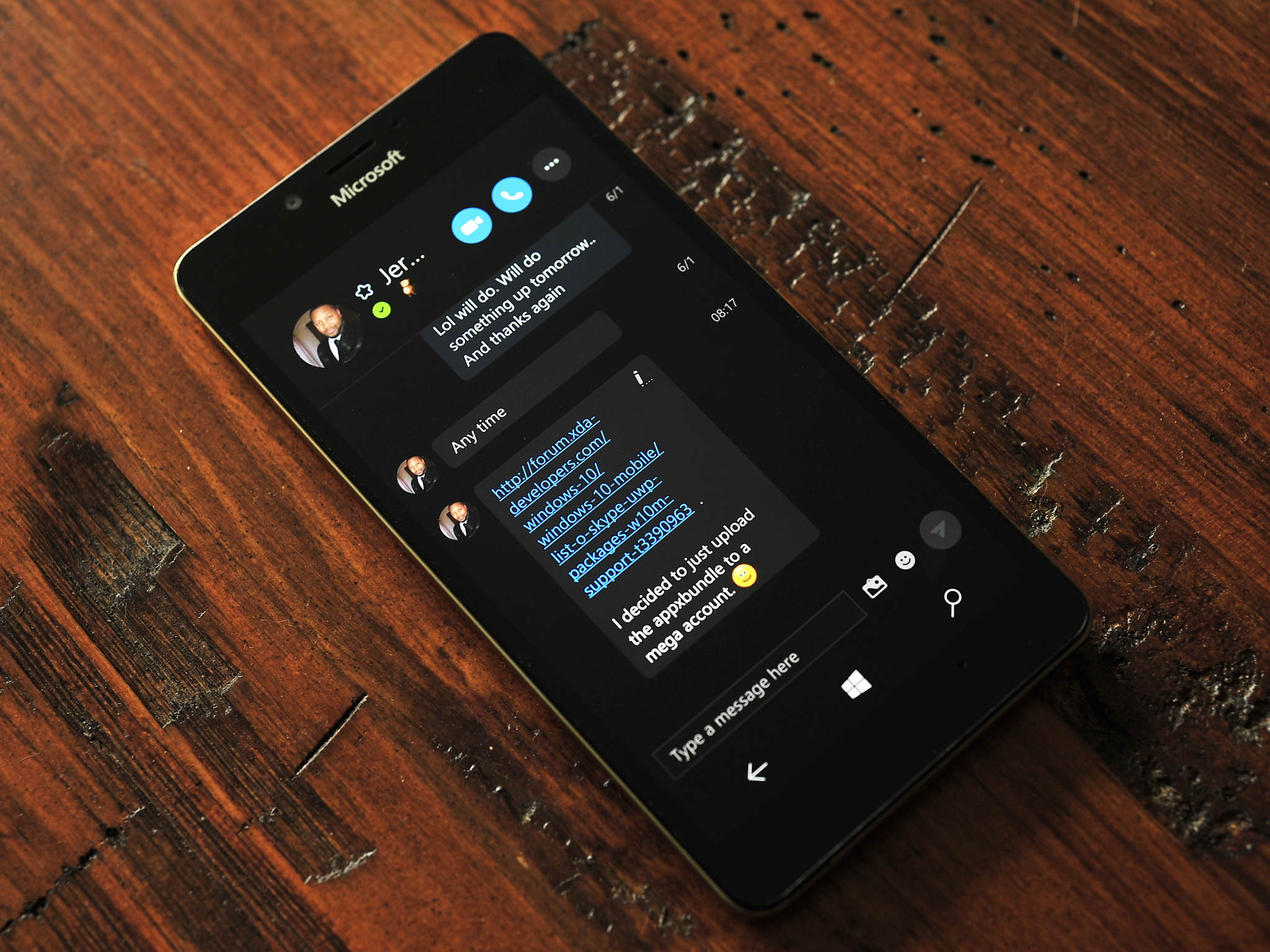
It will be interesting to see how Microsoft integrates Wand's technology of using and sharing app "meaning" or atoms, which essentially makes having a particular app less important than it is under the current paradigm. With a virtual app plug-in in Wand a user will have the ability to perform a function or service via the plug-in without needing the app on their phone or another device. This is an exciting prospect. Combined with the move to bots and the positioning of messaging at the forefront of mobile computing, this technology, if adopted industry-wide, may continue to decrease the importance of dedicated apps.
Bots combined with Wand's technology may help Microsoft bridge the app gap.
Microsoft, of course, will want it's first-party messenger, Skype, as engaging a platform as possible on Windows phones (and elsewhere), to compete with the user-friendly UIs of the competition as this technology potentially finds a place among the masses. Redmond's efforts in this space are multifaceted. It is investing in improving its messaging platform which is growing in concert with the technologies that currently and will run on it.
I'm sure Microsoft wishes the solutions to the app problem and the shift to a new personal computing paradigm were as simple as the wave of a magic wand. It may not be that simple, but the June 16th, 2016 purchase of Wand Labs may be just the magic Redmond needs to help level the playing field.
So what do you think of the potential implementations of Wand technology in Microsoft's Conversations as a Platform industry focused strategy? Does it have the potential of narrowing the app gap? Can Microsoft pull it off if this is indeed the direction they are headed? Sound off in comments and Twitter!
If you missed the any of the other parts of this five part series or these related pieces catch up here!:
- Part I: My evolving view of Microsoft's AI strategy
- Part II: Cortana to rule the world
- Part III: Gates and Ballmer paved the path for Nadella's AI and bots
- Part IV: The war is on! Microsoft is not alone
- The untold app gap story part III: The mobile web is the path to bots
- The untold app gap story Part IV: Going from apps to bots
Jason L Ward is a columnist at Windows Central. He provides unique big picture analysis of the complex world of Microsoft. Jason takes the small clues and gives you an insightful big picture perspective through storytelling that you won't find *anywhere* else. Seriously, this dude thinks outside the box. Follow him on Twitter at @JLTechWord. He's doing the "write" thing!

